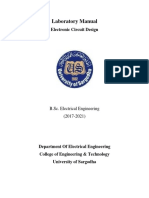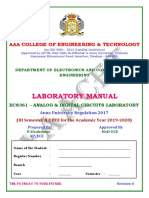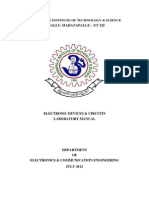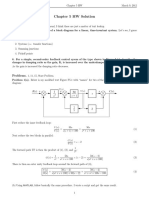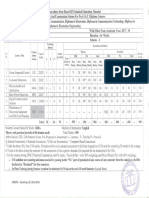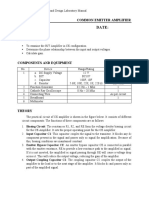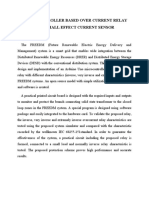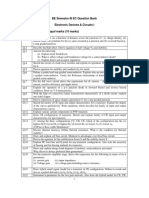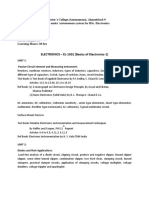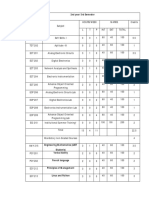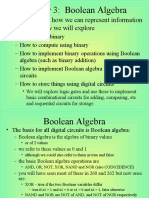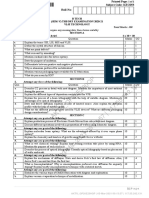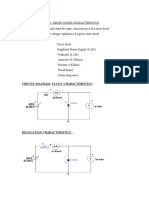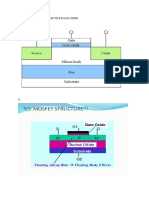0% found this document useful (0 votes)
486 views1 pageEdc Lab Outcomes
This document outlines the objectives, outcomes, and experiments of a course on electronics devices and circuits. The main objective is to make students proficient with basic electronic components and circuits. Upon completing the course, students will be able to set up transistor bias points, verify diode and transistor functioning, build common emitter/base/collector amplifiers, understand operational amplifiers, and design filters and analog-to-digital converters. The course involves experiments with diodes, transistors, filters, amplifiers, and op-amps.
Uploaded by
Anonymous eWMnRr70qCopyright
© © All Rights Reserved
We take content rights seriously. If you suspect this is your content, claim it here.
Available Formats
Download as PDF, TXT or read online on Scribd
0% found this document useful (0 votes)
486 views1 pageEdc Lab Outcomes
This document outlines the objectives, outcomes, and experiments of a course on electronics devices and circuits. The main objective is to make students proficient with basic electronic components and circuits. Upon completing the course, students will be able to set up transistor bias points, verify diode and transistor functioning, build common emitter/base/collector amplifiers, understand operational amplifiers, and design filters and analog-to-digital converters. The course involves experiments with diodes, transistors, filters, amplifiers, and op-amps.
Uploaded by
Anonymous eWMnRr70qCopyright
© © All Rights Reserved
We take content rights seriously. If you suspect this is your content, claim it here.
Available Formats
Download as PDF, TXT or read online on Scribd
/ 1


